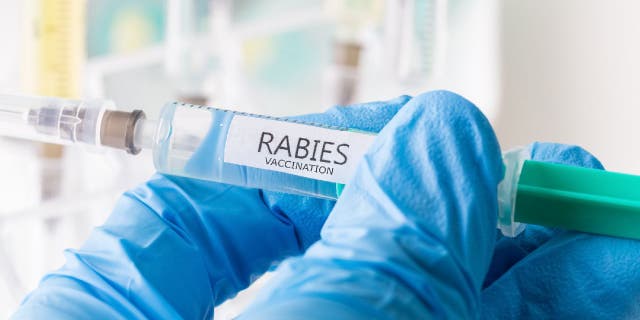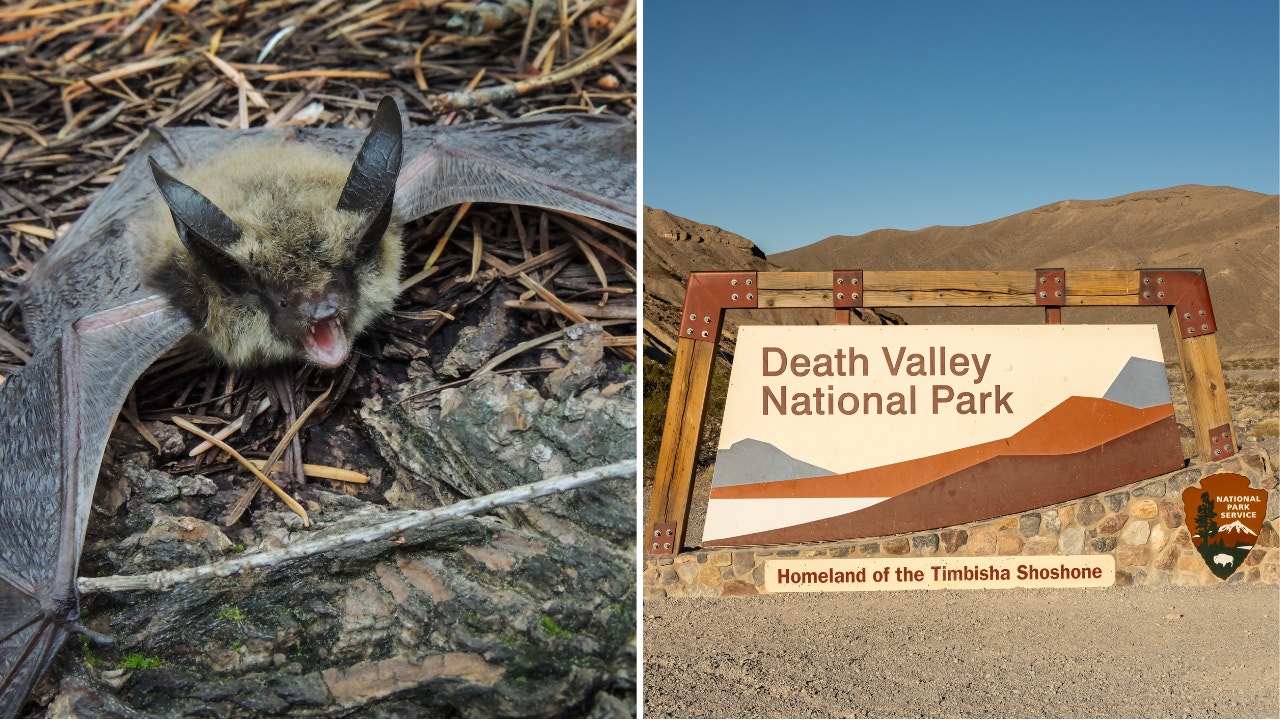The National Park Service (NPS) is reminding the public to not touch or get close to wildlife after a well-intentioned woman in California was bitten by a rabies-infected bat.
In a press release issued on Wednesday, May 3, the NPS revealed the incident occurred at Death Valley National Park last week.
The woman, a concession employee whose name hasn’t been shared with the public, reportedly saw a bat “behaving strangely” outside a general store in Stovepipe Wells, a village in the northern part of Death Valley.
ILLINOIS MAN DIES OF RABIES IN STATE’S FIRST HUMAN CASE SINCE THE 1950S
The bat was sitting on top of a garbage can when the concession worker grabbed the winged creature and tried to move it away from the public way-station.

The Stovepipe Wells General Store in Death Valley National Park is located at 51880 Highway 190 in California. (Google Maps)
“The bat bit her through her nitrile gloves,” the NPS wrote, noting that the bite happened on Friday, April 28.
“National Park Service employees collected the bat, and California Department of Public Health tested it for rabies,” the NPS continued. “On May 2, the woman was informed that the bat did have rabies. She is being treated for rabies exposure.”
Rabies is a fatal but preventable viral disease that commonly infects wild mammals, such as bats, raccoons, skunks and foxes, according to the U.S. Centers for Disease Control and Prevention (CDC).
WHAT TO DO IF A RABIES-INFECTED ANIMAL BITES YOU?
The disease can be transmitted to unvaccinated pets and humans, but infections in humans are extremely rare with approximately one to three cases reported annually, according to CDC records.
Rabies is transmissible through direct contact with mucous membranes of infected animals, which includes the eyes, nose or mouth.

The National Park Service says Death Valley National Park in California is home to at least nine species of bats, including the long-eared Myotis bat (left). (iStock)
The virus is typically transmitted through bites – exposure to saliva via broken skin – or through scratches – which also carry saliva exposure risks.
Postexposure prophylaxis (PEP) is the treatment that’s administered for potential rabies infections in humans, according to the CDC.
The treatment regimen includes one dose of immune globulin and four doses of rabies vaccine over a 14-day period. It should be administered “as soon as possible after exposure” by a healthcare provider, according to the CDC.
MASSACHUSETTS DOG WALKER SURROUNDED BY PACK OF COYOTES: HOW TO KEEP KIDS, DOGS SAFE
“Rabies is usually fatal, unless treated before symptoms begin,” The NPS warned. “Any mammal can carry rabies. People should be especially concerned when an animal is behaving aggressively or does not show a normal fear of humans.”

Health experts recommend people and pets get vaccinated for rabies. (iStock)
Two rabies vaccines (human diploid cell vaccine or purified chick embryo cell vaccine) are currently available in the U.S. for citizens who want to protect themselves, according to the U.S. Department of Health and Human Services.
While the NPS has issued a warning about visitors needing to take precautions around bats, the agency noted that the flying mammals are important to the ecosystem.
“At least nine species of insect-eating bats live in Death Valley National Park,” the NPS wrote. “Typically, less than 1% of bats have rabies. Bats—and all other native wildlife—are protected within the park.”
CLICK HERE TO SIGN UP FOR OUR LIFESTYLE NEWSLETTER
To minimize chances of rabies exposure, the NPS advises visitors to never approach, touch, feed or pick up a wild animal, and instead watch them from a safe distance.
Other safety tips include staying out of mine openings and other places where bats are likely to roost, calling a park employee if you witness a sick, dead or erratic-behaving animal and consulting a doctor if you’ve made contact with an animal that could be rabid.
In April, a report published in the Clinical Infectious Diseases journal run by Oxford University Press found that an 84-year-old man from Minnesota died in 2021 after receiving a post-exposure prophylaxis treatment following his encounter with a rabid bat, which bit his right hand.
Experts that Fox News Digital consulted with on the matter said the patient “received timely and appropriate treatment,” but he likely had an immune deficiency that contributed to the treatment’s failure.
FOLLOW US ON FACEBOOK FOR MORE FOX LIFESTYLE NEWS
Fox News Digital’s contributing health writer Shiv Sudhakar contributed to this report.


